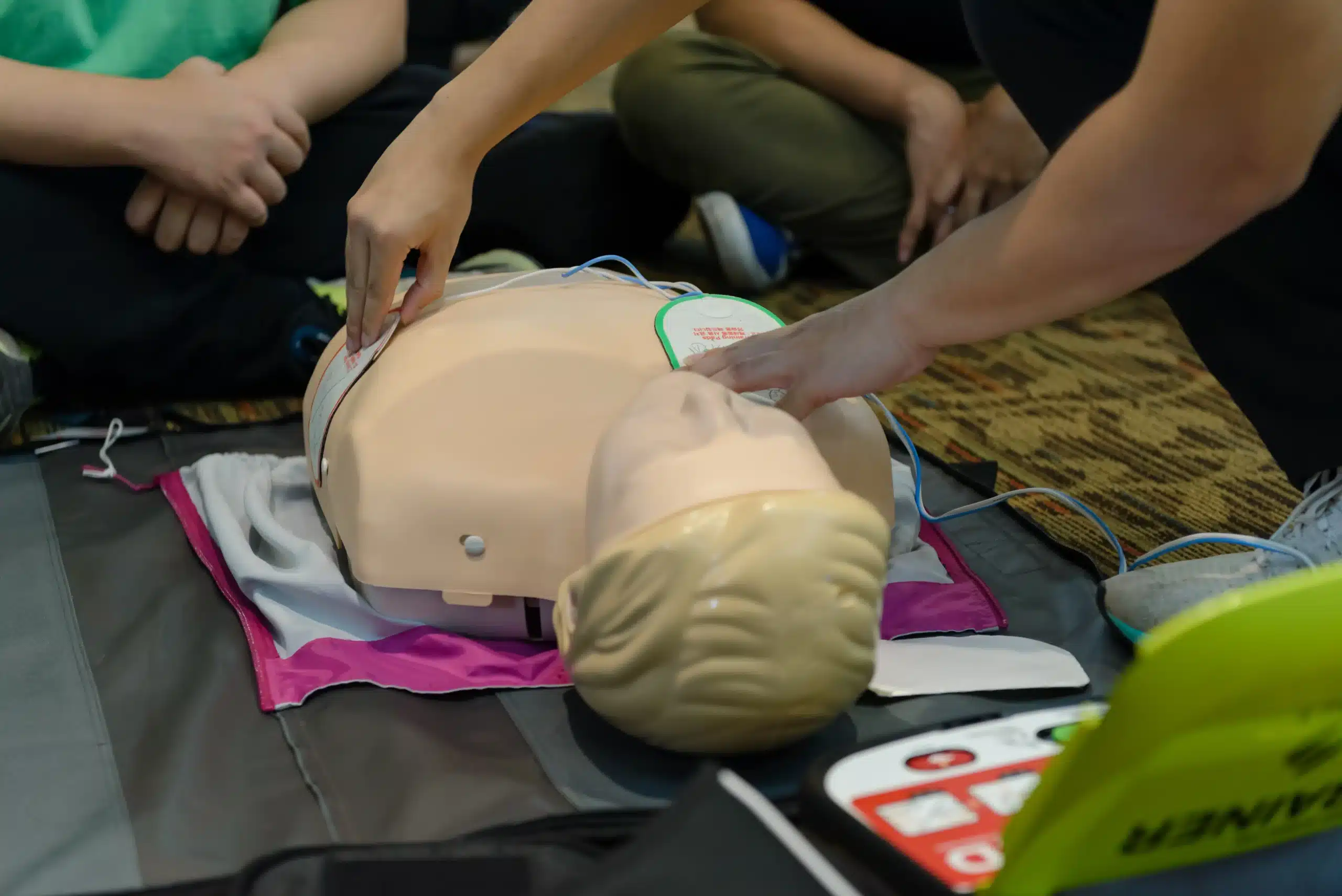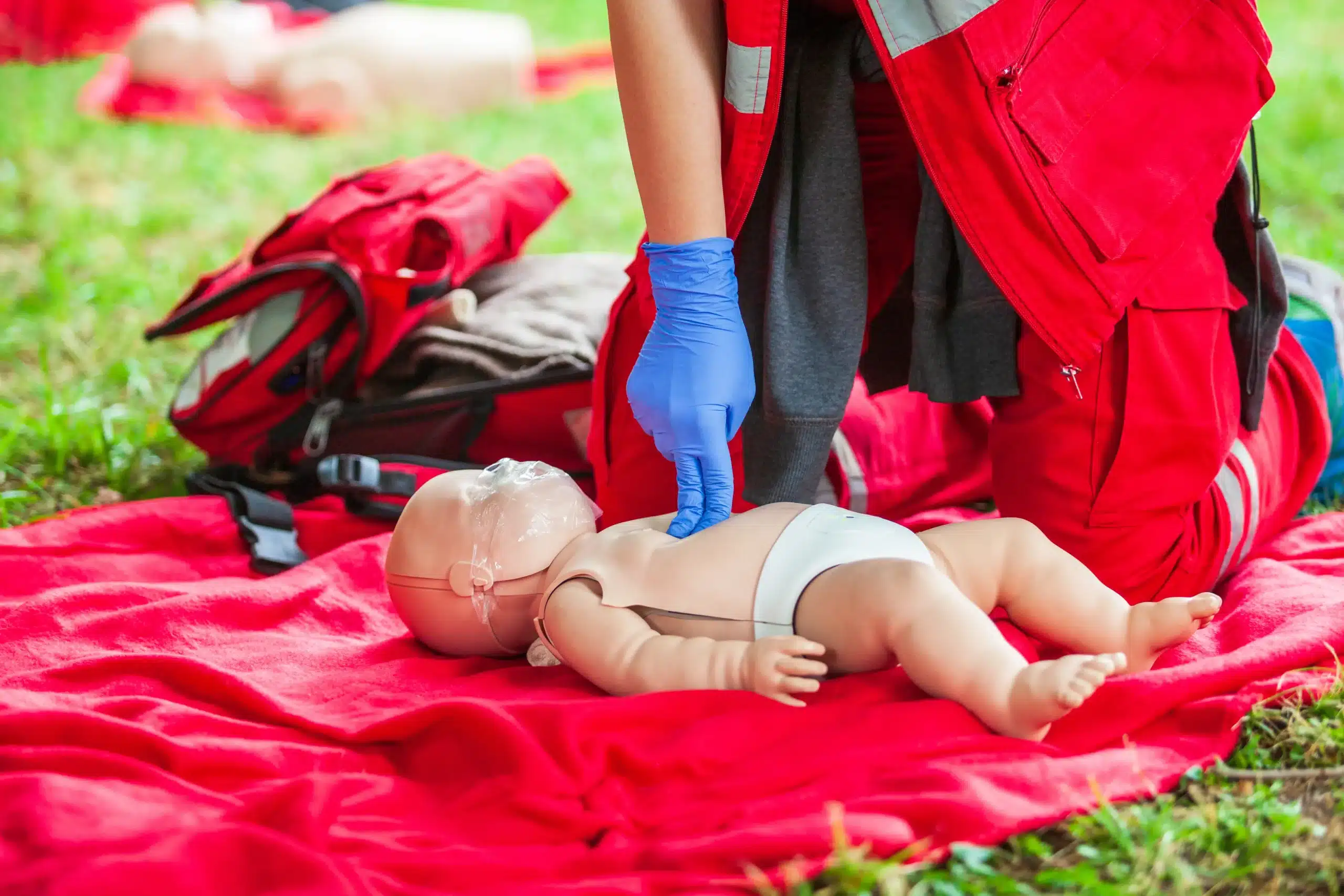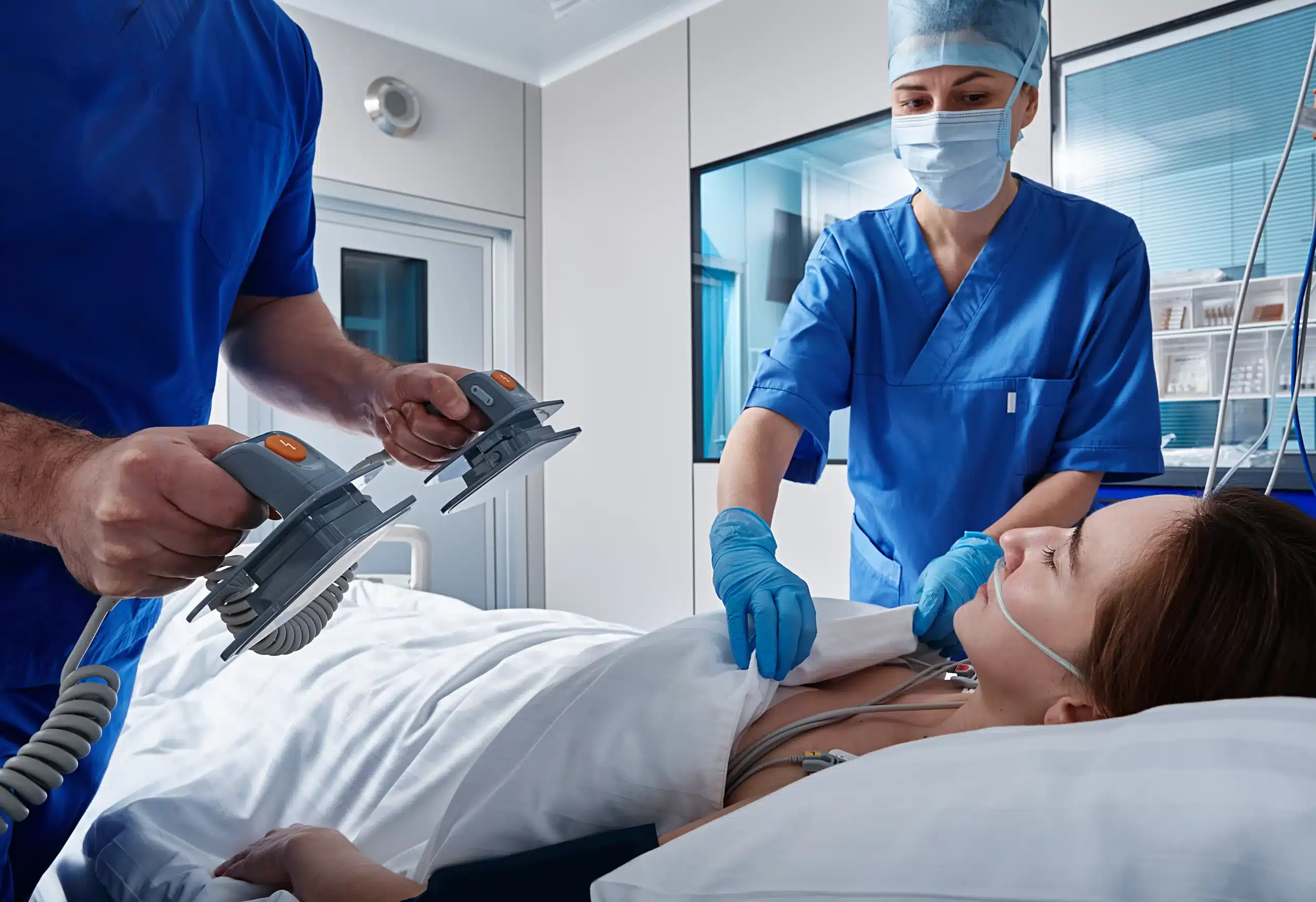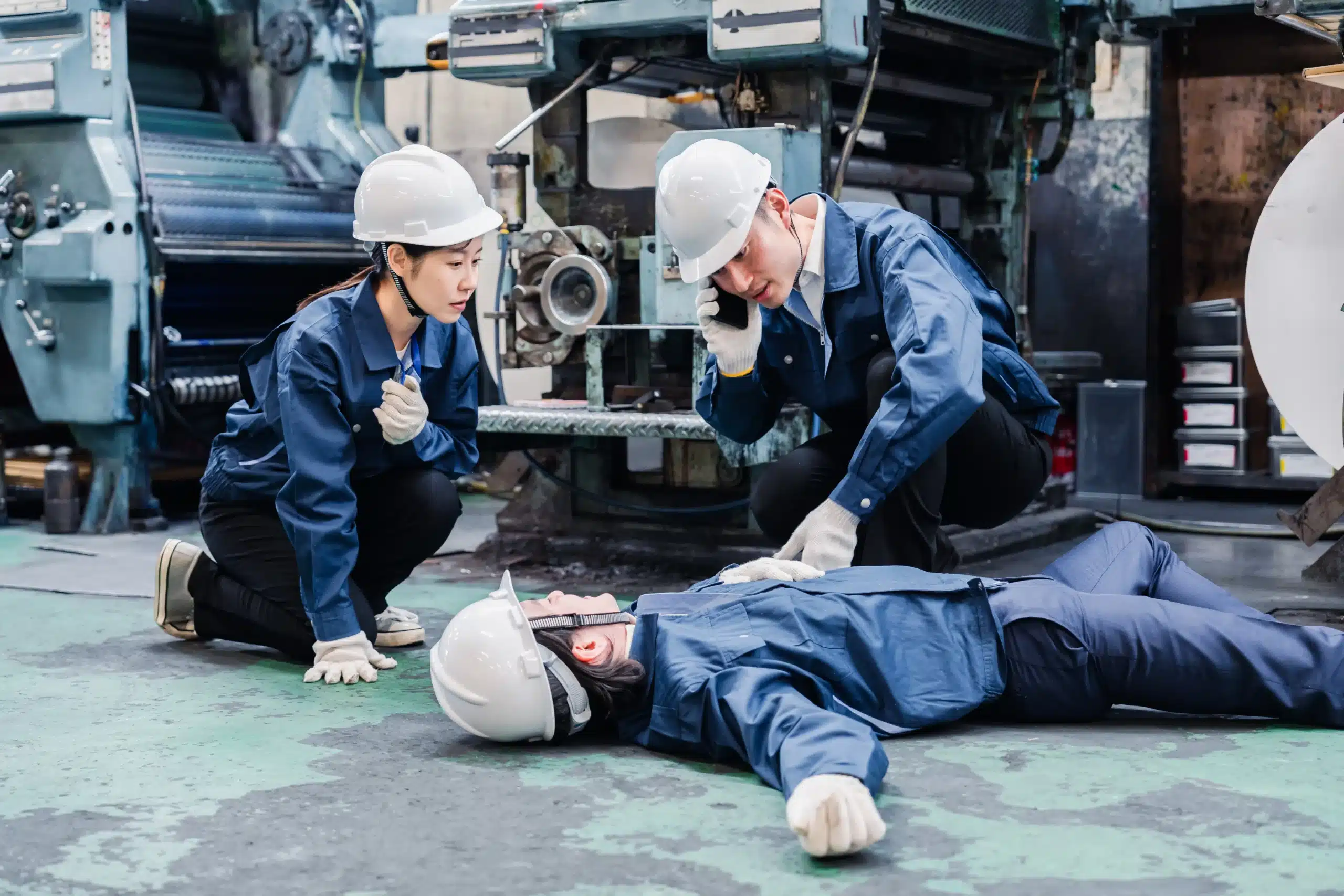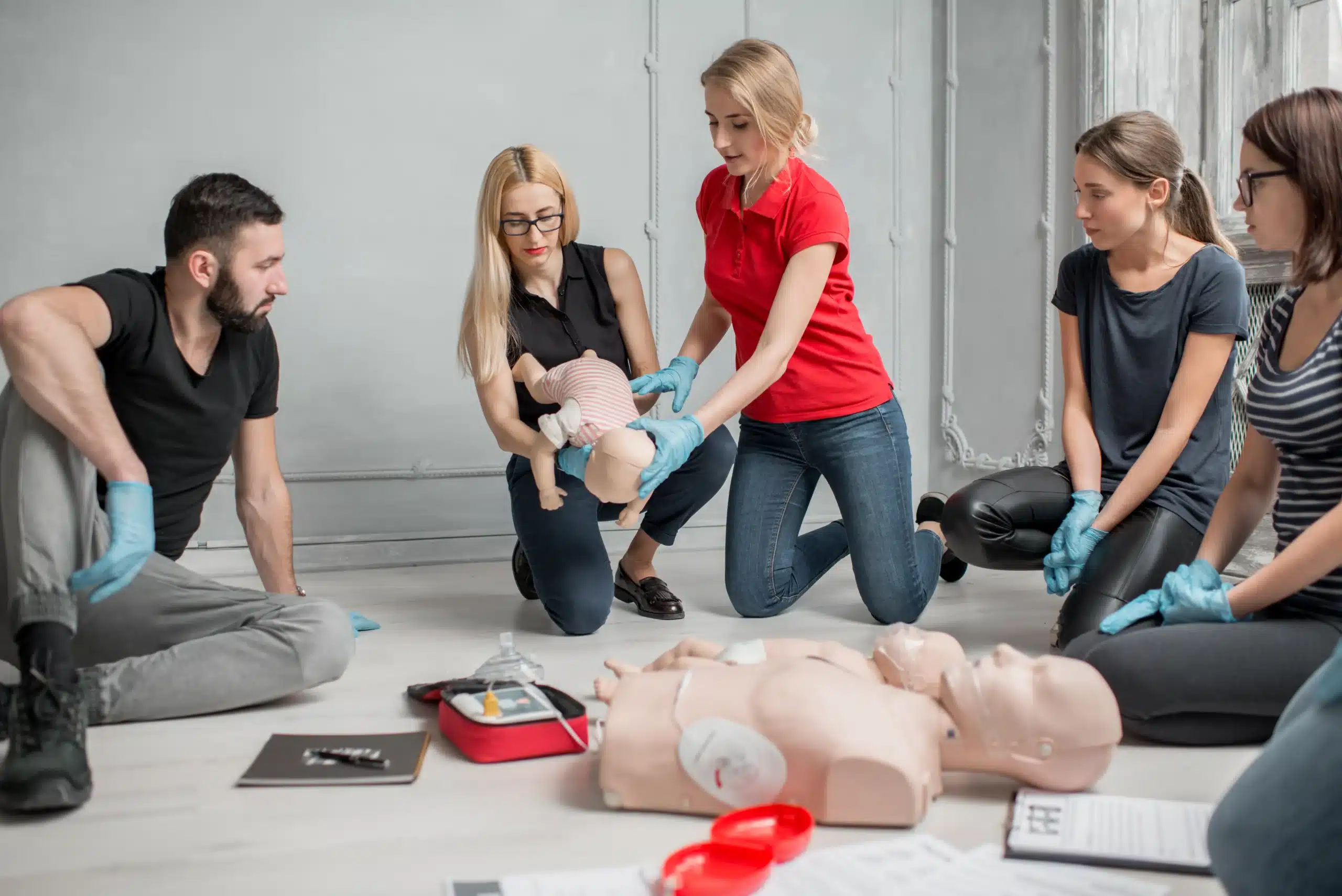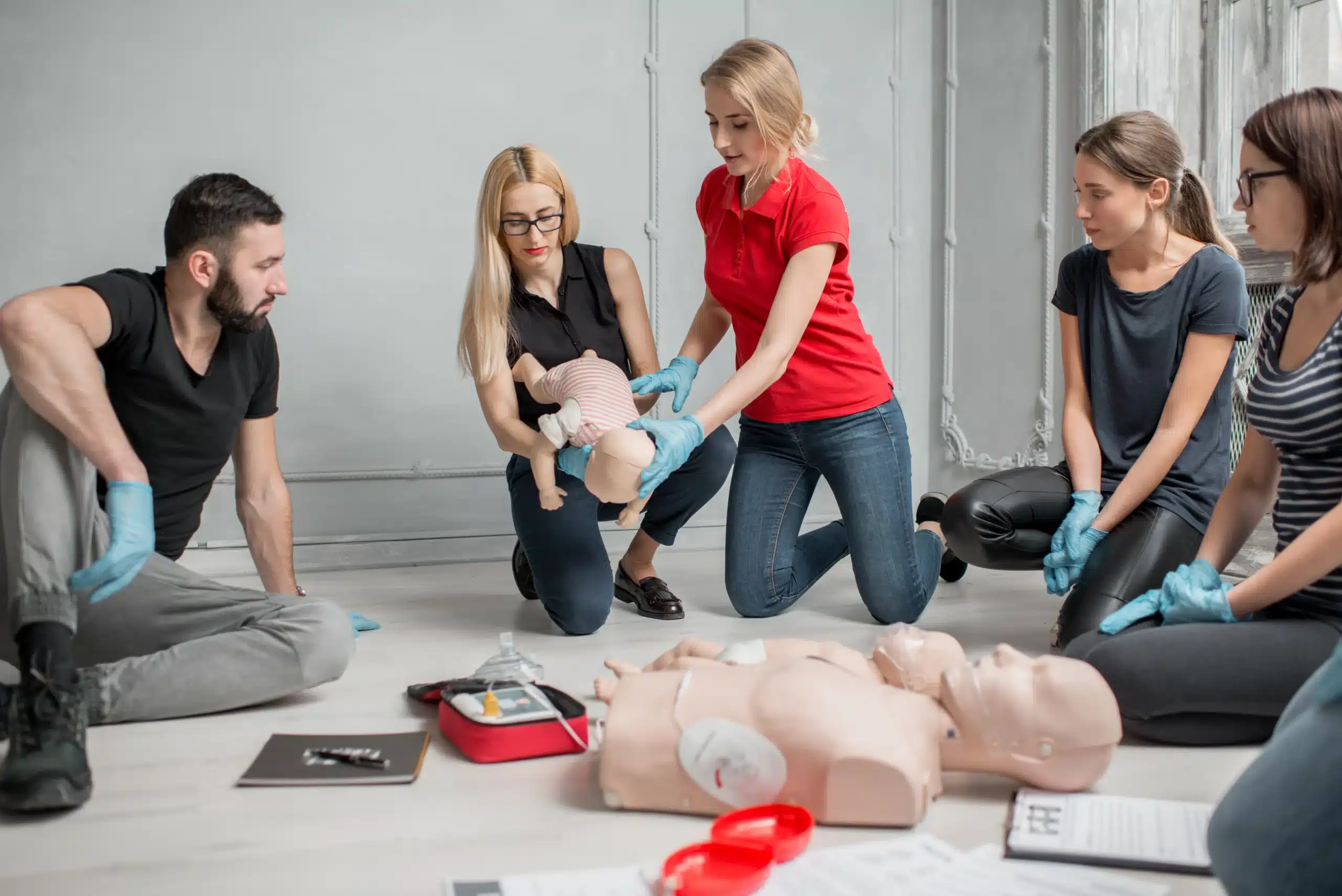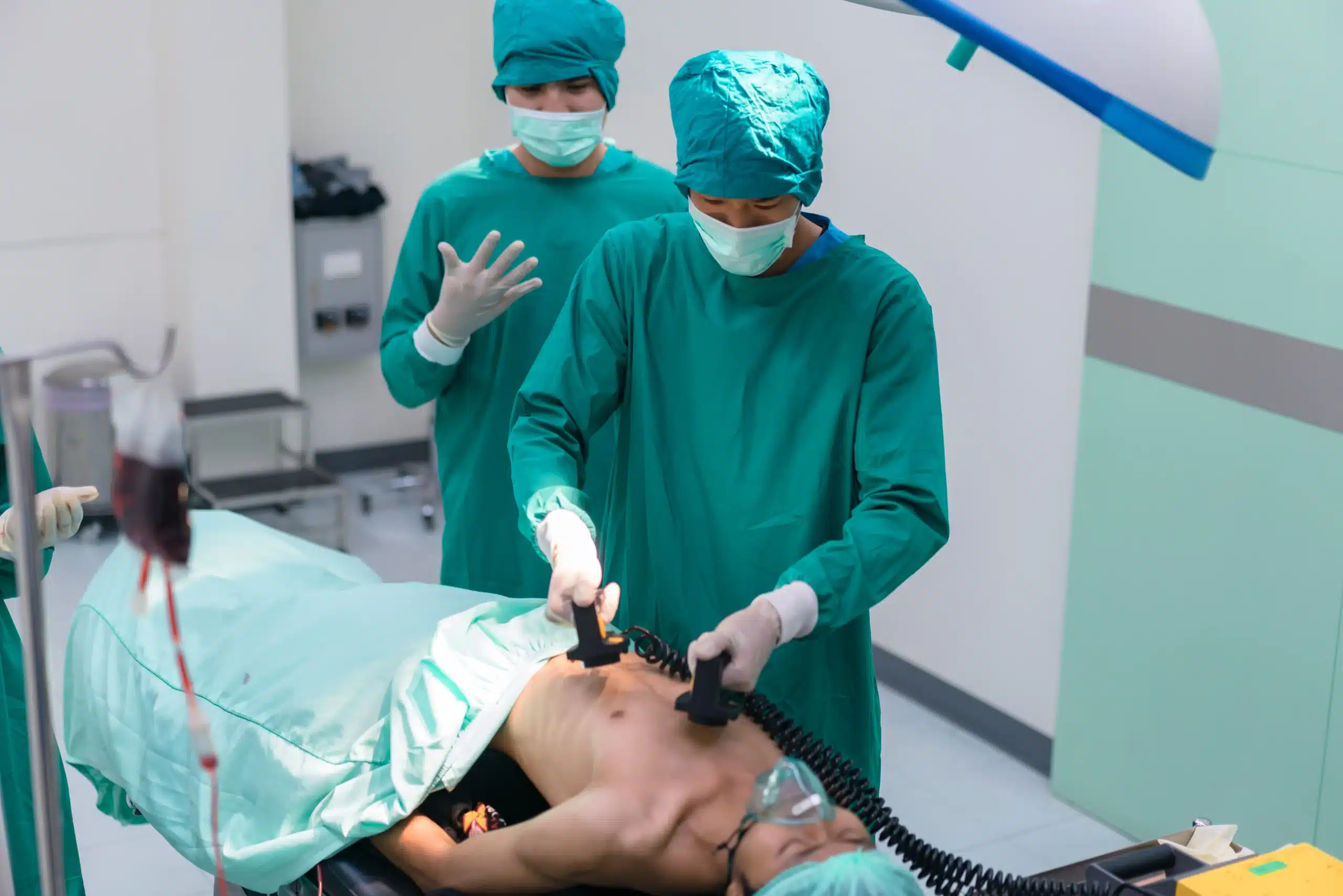CPR is a powerful skill that can make a real difference in critical situations. This guide simplifies the process of finding the right CPR courses in San Jose, breaking down the different types of training available, the certification process, and what to expect in terms of cost and scheduling. We’ll explore various CPR courses in San Jose, from basic life support to advanced cardiac care, and discuss the importance of choosing an accredited training provider. Whether you’re looking for CPR certification in San Jose for personal enrichment or professional requirements, this guide will help you make informed decisions about your training.
Key Takeaways
- Find the right CPR course for your needs: Whether you’re a healthcare professional, a childcare provider, or simply want to be prepared for emergencies, different CPR certifications cater to various needs and professions. Consider factors like BLS, ACLS, PALS, and First Aid when choosing your course.
- CPR training offers flexible learning options: Balance your busy schedule with in-person, blended learning, or online components. Many providers offer flexible class times, including evenings and weekends, making it easier to fit training into your life.
- Understand CPR certification requirements: CPR courses combine theoretical knowledge with hands-on practice, often using real-time feedback devices. Certifications typically last two years and require recertification to stay current with the latest guidelines. Be sure to choose an accredited provider for a recognized certification.
What is CPR? San Jose Course Guide
Cardiopulmonary resuscitation (CPR) is a lifesaving technique used when someone’s heart stops beating or they stop breathing. It involves chest compressions and rescue breaths to keep blood flowing to the brain and other vital organs until professional help arrives. Knowing CPR can dramatically improve the odds of survival in these critical situations, empowering you to take immediate action and potentially save a life. CPR certification in San Jose provides the necessary skills to respond confidently during emergencies.
CPR training gives you the skills and confidence to respond effectively in an emergency. Several organizations, including the American Heart Association, offer various CPR courses to fit different needs. These courses cover everything from the basics to more advanced techniques, ensuring there’s an option for everyone, whether you’re a healthcare professional or simply want to be prepared. CPR classes in San Jose offer various formats, including in-person sessions, online learning, and blended learning that combines both. This flexibility makes it easier to find a course that works with your schedule and preferred learning style. Many courses now use real-time feedback devices to help students refine their technique and gain a deeper understanding of effective CPR. For those seeking training in nearby areas, you can also find CPR classes in Milpitas.
CPR Course Types
Knowing which CPR course is right for you can feel overwhelming. This section breaks down the most common types of CPR training available in San Jose, so you can choose the best fit.
Basic Life Support (BLS)
The Basic Life Support (BLS) course is the foundation for anyone in healthcare. It covers core skills like high-quality CPR, using an AED (automated external defibrillator), and working effectively in a team during emergencies. BLS certification is typically required for medical professionals like doctors, nurses, paramedics, and other healthcare providers. It’s also a good idea for anyone working in a healthcare setting, even in a non-medical role.
Advanced Cardiovascular Life Support (ACLS)
Advanced Cardiovascular Life Support (ACLS) training builds upon the skills learned in BLS. This course is designed for healthcare professionals who are often the first responders in cardiovascular emergencies. ACLS covers advanced interventions, including managing cardiac arrest, strokes, and other serious heart conditions. It emphasizes quick thinking and effective treatment strategies in critical situations.
Pediatric Advanced Life Support (PALS)
If you work with children, the Pediatric Advanced Life Support (PALS) course is essential. This specialized training focuses on recognizing and responding to emergencies in infants and children. PALS teaches healthcare providers how to provide effective care for critically ill or injured young patients, covering everything from respiratory distress to cardiac events.
First Aid Training
While not strictly CPR, First Aid training is a valuable skill for everyone. It teaches you how to respond to a wide range of medical emergencies, from minor cuts and burns to more serious injuries like fractures and allergic reactions. Many CPR courses include a First Aid component, making it easy to become certified in both. Knowing basic First Aid can make you a valuable asset in any situation, whether at home, at work, or out in the community.
Top San Jose CPR Providers
Finding the right CPR training can feel overwhelming with so many options. To help you out, I’ve compiled a list of reputable CPR providers in and around San Jose. Remember to always verify a provider’s legitimacy and certifications before registering for a course. Our CPR Certification in San Jose guide offers additional tips on what to look for.
American Red Cross
The American Red Cross offers various CPR classes in San Jose, including options for adults, children, and infants. They provide essential lifesaving skills training and certification. You can explore their course catalog to find a class that fits your needs.
American Heart Association
The American Heart Association offers a comprehensive range of CPR and first aid training programs, from Basic Life Support (BLS) for healthcare providers to Heartsaver courses for the general public. Their certifications are widely recognized and respected. You can find AHA CPR classes throughout the South Bay Area. We also offer AHA-certified BLS training at our Milpitas location.
Milpitas CPR Classes
Milpitas CPR Classes offers various CPR and first aid courses, including BLS, ACLS, and PALS, catering to different certification levels. We focus on hands-on training and provide flexible scheduling to accommodate busy schedules. We proudly serve Milpitas, San Jose, and Santa Clara.
Safety Training Seminars
Safety Training Seminars provides American Heart Association-certified courses in nearby Milpitas. They offer a range of courses, including BLS, ACLS, PALS, and First Aid. Their convenient seven-day-a-week schedule makes it easier to find a time that works for you.
CPR Training Center
The CPR Training Center offers various CPR classes in Milpitas, focusing on American Heart Association certifications such as BLS, ACLS, PALS, and First Aid. They aim to equip participants with the skills to respond effectively in emergencies. Learn more about their programs on their website.
Premium CPR
Premium CPR, based in Campbell, CA, provides in-person training for several CPR certifications. They emphasize the importance of legitimate, in-person training and caution against online-only certifications, which may not meet regulatory requirements. You can find more information on their CPR training philosophy on their website.
CPR Course Formats & Schedules
Choosing the right CPR course format is just as important as the course content itself. Understanding the differences between in-person, online, and blended learning can help you find the best fit for your schedule and learning style. Let’s break down the options:
In-person Training
In-person CPR training offers hands-on learning with expert instructors. This direct interaction allows for immediate feedback and personalized guidance as you practice essential CPR techniques. This format is ideal for those who learn best in a traditional classroom setting and value the opportunity to ask questions and engage with instructors and fellow students. In-person training typically leads to a two-year certification, with renewal courses readily available.
Online Courses
While the convenience of online CPR courses is undeniable, it’s crucial to understand their limitations. Many online-only certifications exist, but they might not be accepted by major certifying organizations like the American Heart Association or the Red Cross. These organizations often require a hands-on skills assessment, which purely online courses can’t provide. If you’re considering an online-only option, double-check its acceptance with your employer or licensing board.
Blended Learning
Blended learning offers a practical solution, combining the flexibility of online learning with essential hands-on practice. You’ll typically complete the cognitive portion of the course online at your own pace, then attend an in-person skills session to demonstrate your proficiency. This format provides a balance between convenience and practical experience, making it a popular choice.
Flexible Class Schedules
Finding a CPR course that fits your busy schedule is easier than ever. Many providers, like Safety Training Seminars, offer flexible class schedules, including evening and weekend options. This accessibility ensures that everyone, from healthcare professionals to busy parents, can obtain and maintain their CPR certification. Look for providers in your area that offer a range of class times.
CPR Course Costs & Value
Understanding CPR course costs and the value of certification is key to making an informed decision about your training. Let’s break down the expenses involved and why CPR certification is a worthwhile investment.
Course Pricing
CPR course fees in San Jose and the surrounding areas like Milpitas and Santa Clara can range from around $30 to upwards of $5,000, depending on the training level and the type of certification. Basic CPR classes for the general public usually fall on the lower end of the spectrum, between $30 and $60. More specialized courses, such as instructor training, naturally come with a higher price tag. These costs typically cover your training materials, certification fees, and sometimes the necessary equipment. You can explore pricing for specific courses like BLS, ACLS, and combined CPR/First Aid training on our website.
Additional Fees
Beyond the initial course fee, it’s wise to consider potential ongoing costs. CPR certifications are typically valid for two years, after which you’ll need recertification. Recertification costs can vary but generally range from $50 to $150. If you’re considering becoming a CPR instructor, also account for liability insurance, which can add another $200 to $500 annually.
Group Discounts
If you’re training a team or group, many CPR training providers offer group discounts. This can be a cost-effective solution for businesses, community organizations, or even a group of friends. Contacting providers directly is the best way to learn about group rates and package deals.
Certification Value
While there are costs associated with CPR training, the value of becoming certified is immeasurable. Learning CPR equips you with the skills to potentially save a life. A CPR certification demonstrates your commitment to safety and preparedness. Plus, for many healthcare professionals and other roles, holding a current CPR certification is a job requirement. Remember, certifications are typically valid for two years, so staying current with your training is essential for maintaining your skills and credentials. Our RQI program is a great option for medical professionals seeking efficient recertification.
CPR Certification: Process & Validity
CPR certification is more than just a credential—it’s about equipping yourself with the skills and confidence to potentially save a life. Understanding the certification process, from course expectations to renewal requirements, helps you choose the right course and stay prepared for emergencies.
Course Expectations
CPR training empowers you to respond effectively to medical emergencies. Whether you’re learning basic CPR or pursuing advanced certifications like BLS, ACLS, or PALS, expect a combination of theoretical learning and hands-on practice. You’ll learn to recognize the signs of a cardiac arrest, perform chest compressions, provide rescue breaths, and use an automated external defibrillator (AED). These courses emphasize real-world scenarios and provide the knowledge you need to act quickly and confidently in a crisis. CPR courses also cover first aid basics, expanding your skillset to handle various medical situations. Learn more about our CPR and First Aid Certification courses.
Assessment Methods
Modern CPR courses often incorporate real-time feedback devices to enhance learning and skill retention. These tools provide immediate feedback on the quality of your chest compressions, ensuring you develop proper technique and depth. Studies show that this immediate, electronic feedback motivates students and improves the overall quality of CPR performance. This hands-on approach, combined with instructor guidance, helps you master the essential skills needed to provide effective CPR.
Certification Validity
CPR certifications are typically valid for two years. This timeframe ensures your skills and knowledge remain current and aligned with the latest guidelines. Staying up-to-date with CPR techniques is crucial for providing the most effective care.
Renewal & Recertification
As your certification nears its expiration date, you’ll need to complete a recertification course. This refresher reinforces your skills and updates you on any changes in CPR guidelines. Contact your original training provider or another certified center like Milpitas CPR Classes to find a recertification course that fits your schedule. Maintaining your certification demonstrates your commitment to providing high-quality CPR and ensures you’re always prepared to respond to emergencies.
Choose the Right CPR Course
Finding the right CPR course means understanding your needs and the different options available. Let’s break down how to choose the best fit.
Factors to Consider
CPR course length varies depending on the certification level (CPR, BLS, ACLS, PALS), the format (in-person, blended learning, or online components), and the training provider. Consider your schedule and preferred learning style. Some courses offer weekend or evening options for more flexibility.
Match Courses to Your Needs
Different professions and personal situations call for specific CPR training. Healthcare providers, like doctors and nurses, typically pursue ACLS and PALS certifications. CPR and First Aid certification often suits teachers, coaches, or childcare providers. Even if CPR training isn’t required for your job, learning these skills allows you to help family, friends, and your community.
Importance of Accreditation
Make sure your chosen course offers a recognized certification, such as those from the American Heart Association (AHA). Milpitas CPR Classes offers AHA-certified courses, ensuring your certification is widely accepted. This accreditation is crucial for professional recognition and demonstrates you’ve received high-quality training.
CPR Training Misconceptions
While online resources can be helpful, be wary of solely online CPR certifications. Hands-on practice is essential for mastering CPR techniques and responding effectively in emergencies. Organizations like the AHA require in-person skills sessions for certification. Don’t fall for online-only programs that promise certification without the necessary practical training. Hands-on learning is irreplaceable when developing life-saving skills.
Related Articles
- CPR Certification in San Jose: Your Complete Guide – Milpitas CPR Classes
- BLS Renewal in San Jose: Your Complete Guide – Milpitas CPR Classes
- ACLS Courses in San Jose: Your Complete Guide – Milpitas CPR Classes
- PALS HeartCode Santa Clara: Your Certification Guide – Milpitas CPR Classes
- First-Aid Training in Santa Clara: Your Guide – Milpitas CPR Classes
Frequently Asked Questions
What’s the difference between BLS and CPR? CPR is the core lifesaving technique involving chest compressions and rescue breaths. BLS (Basic Life Support) builds upon CPR, adding skills like using an AED and working as a team during emergencies. Think of CPR as the foundation, and BLS as the next level up, especially crucial for healthcare providers.
Which CPR certification is right for me? The best CPR certification depends on your situation. If you’re a healthcare professional, BLS, ACLS, or PALS might be required. For those outside healthcare, a basic CPR/First Aid course is a great starting point. Consider your job, personal life, and whether CPR certification is a job requirement or simply a valuable life skill you want to acquire.
How long does CPR certification last, and how do I renew it? CPR certifications are typically valid for two years. To renew, you’ll need to take a recertification course before your current certification expires. This refresher course ensures your skills and knowledge are up-to-date. Contact your original training provider or another certified center to find a recertification course.
Are online-only CPR certifications valid? While convenient, online-only CPR certifications often don’t meet the requirements of organizations like the American Heart Association or the Red Cross. These organizations usually require an in-person skills assessment component. Always check if a purely online certification is accepted by your employer or licensing board before enrolling. Blended learning, which combines online coursework with in-person skills sessions, is often a better option.
How much do CPR classes cost? CPR class costs vary depending on the course type, location, and training provider. Basic CPR/First Aid courses typically range from $30 to $60, while more advanced certifications like BLS, ACLS, and PALS can cost more. Look for providers who offer group discounts if you’re training with others. Remember to factor in the cost of recertification every two years.
